 I’ve personally been drinking wines from Napa Valley’s Franciscan Estate Winery since the early 1990’s. In that time they’ve remained a solid player that offers appealing wines sold at consumer friendly prices. Their portfolio has occasionally expanded a bit but they have mostly remained focused on their core offerings. Here’s a look at three current releases that make up a large portion of the backbone of their operation.
The Franciscan Estate 2011 Napa Valley Chardonnay is a 100% varietal wine. All of the fruit comes from the winery’s home appellation of Napa Valley. Barrel aging occurred over 7 months in a combination of French and American oak; 20% of the barrels utilized were new. 74,000 cases of this widely available offering were produced and it has a suggested retail price of $18. Golden Delicious apple and vanilla bean aromas emerge from the nose of this Chardonnay Orchard fruit and apple pie spice are in abundance throughout the even keeled palate. A bit of crème fraiche leads the crisp finish along with cloves, white pepper and an undercurrent of lemon zest. This is an easy to find Chardonnay that is well made vintage after vintage. If you’re looking for a New World Chardonnay that showcases its appealing fruit flavors this is one to consider.
I’ve personally been drinking wines from Napa Valley’s Franciscan Estate Winery since the early 1990’s. In that time they’ve remained a solid player that offers appealing wines sold at consumer friendly prices. Their portfolio has occasionally expanded a bit but they have mostly remained focused on their core offerings. Here’s a look at three current releases that make up a large portion of the backbone of their operation.
The Franciscan Estate 2011 Napa Valley Chardonnay is a 100% varietal wine. All of the fruit comes from the winery’s home appellation of Napa Valley. Barrel aging occurred over 7 months in a combination of French and American oak; 20% of the barrels utilized were new. 74,000 cases of this widely available offering were produced and it has a suggested retail price of $18. Golden Delicious apple and vanilla bean aromas emerge from the nose of this Chardonnay Orchard fruit and apple pie spice are in abundance throughout the even keeled palate. A bit of crème fraiche leads the crisp finish along with cloves, white pepper and an undercurrent of lemon zest. This is an easy to find Chardonnay that is well made vintage after vintage. If you’re looking for a New World Chardonnay that showcases its appealing fruit flavors this is one to consider.
The Franciscan Estate 2010 Napa Valley Cabernet Sauvignon was produced from Napa Valley Fruit. In addition to Cabernet Sauvignon (85%), small amounts of Merlot (11%), Syrah (3%), and Malbec (1%) were also blended in. Barrel aging took place over a period of 20 months; 25% of the barrels utilized were new. 117,000 cases of this wine were produced and it has a suggested retail price of $28. Blackberry and blueberry aromas star on the nose of this 2010 Cabernet Sauvignon. Loads of dark berry flavors dominate the palate, interspersed with bits of red fruit throughout. Copious spices are present as well and add to the depth and complexity of this eager and appealing Cabernet. Minerals and earth are prominent components of the finish which shows good length for its category. Medium tannins yield with some air. This is a textbook example of a Napa Valley Cabernet that is meant for relatively short term consumption. It’ll hold up over the next 5 or 6 years, but it’s appealing, well priced and perfect to drink now, no reason to wait.
The Franciscan Estate 2008 Magnificat is a Napa Valley Meritage wine. This Bordeaux inspired blend has been produced since the 1985 vintage. The 2008 version blends together Cabernet Sauvignon (69%), Merlot (23%), Petit Verdot (6%), and Malbec (2%). This wine spent 20 months aging in oak; 70% of the barrels utilized were new. Just over 7,000 cases of the 2008 Magnificat were produced and it has a suggested retail price of $50. Bramble, red and black raspberry, as well as bits of vanilla bean are present on the nose of this 2008 Meritage. The palate here is studded with sumptuous black fruit flavors, lead by blackberry as well plum and accompanied by a vigorous spice component. Dark chocolate, espresso, earth and black pepper are all in strong evidence on the lengthy and persistent finish of the 2008 Magnificat. This is one of the longest standing and also most consistently excellent Meritage wines coming out of Napa Valley. At $50 a bottle it offers a combination of quality level and relative bang for the buck that is hard to beat. There are similar style blends selling for more than twice the price that can’t touch Magnificat. Whether you purchase it to drink today, or you want to lay it down for a special occasion a decade or so from now, you’re going to get a terrific bottle of wine at a very good price.
The Franciscan wines are standard bearers in Napa Valley. This is producer that makes fairly large quantities of wine that are easy to find all over the country. Their wines also represent a consistent level of quality and offerings that are fairly priced. These wines are well worth your time and money.

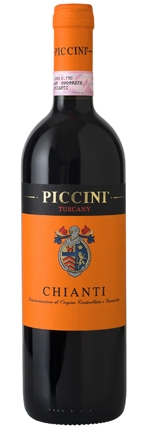 These days Barolo, Brunello and even Aglianico often steal many of the headlines when it comes to Italian wine. However Chianti continues to be a go to choice for a lot of folks who drink offerings from Italy. And well it should be as they can often be well made at an affordable price. The fact that good Chianti is also one of the most natural food partners in the world certainly helps too. Today I’ll look at a current release from Piccini.
The Piccini 2011 Chianti DOCG also known as Chianti Orange is the standard bearer in the Piccini line. This Chianti is a blend of Sangiovese (95%) and Cilliegiolo (5%). Fermentation is temperature controlled. This is followed by a second fermentation induced by adding a selection of withered Sangiovese grapes. This Chianti is widely available around the country and has a suggested retail price of $8.99.
These days Barolo, Brunello and even Aglianico often steal many of the headlines when it comes to Italian wine. However Chianti continues to be a go to choice for a lot of folks who drink offerings from Italy. And well it should be as they can often be well made at an affordable price. The fact that good Chianti is also one of the most natural food partners in the world certainly helps too. Today I’ll look at a current release from Piccini.
The Piccini 2011 Chianti DOCG also known as Chianti Orange is the standard bearer in the Piccini line. This Chianti is a blend of Sangiovese (95%) and Cilliegiolo (5%). Fermentation is temperature controlled. This is followed by a second fermentation induced by adding a selection of withered Sangiovese grapes. This Chianti is widely available around the country and has a suggested retail price of $8.99. While I’m a firm believer that Sparkling Wine should be consumed every day of the year and both with and without a meal; there’s no denying that around Holiday time people pop a lot more bubbly. With that idea in mind I recently sat down and tasted close to three dozen examples. Here are the seven I feel the most strongly about recommending and a few words about each.
Cachette Blanc de Blanc (NV). This French sparkling wine was made from 100% Airen, a grape which is often associated with Spain. Primary fermentation occurred naturally while the secondary was at controlled temperatures. 2,000 cases of this offering were imported to the US and it has a suggested retail price of $14.99. Bits of ginger and lemon ice aromas are present on the nose of this Burgundian Sparkler. Fresh apples, pear and continued lemon characteristics are all in evidence through the palate which is buoyed by zippy acidity. Plenty of spice and additional citrus elements are in evidence on the finish which is clean, crisp and refreshing. This is a nice Sparkling Wine in the entry level category for those who want something dry. Cachette works well by itself or will also pair with light foods.
While I’m a firm believer that Sparkling Wine should be consumed every day of the year and both with and without a meal; there’s no denying that around Holiday time people pop a lot more bubbly. With that idea in mind I recently sat down and tasted close to three dozen examples. Here are the seven I feel the most strongly about recommending and a few words about each.
Cachette Blanc de Blanc (NV). This French sparkling wine was made from 100% Airen, a grape which is often associated with Spain. Primary fermentation occurred naturally while the secondary was at controlled temperatures. 2,000 cases of this offering were imported to the US and it has a suggested retail price of $14.99. Bits of ginger and lemon ice aromas are present on the nose of this Burgundian Sparkler. Fresh apples, pear and continued lemon characteristics are all in evidence through the palate which is buoyed by zippy acidity. Plenty of spice and additional citrus elements are in evidence on the finish which is clean, crisp and refreshing. This is a nice Sparkling Wine in the entry level category for those who want something dry. Cachette works well by itself or will also pair with light foods. Gustave Lorentz Cremant s’Alsace Rosé (NV). 100% Pinot Noir from the Alsace region of France was used to make this sparkling Rosé. This offering was vinified using the traditional Methode Champenoise. 2,500 cases of this offering were produced and it has a suggested retail price of $24.99. Strawberry, vanilla and fresh cream aromas burst forth from the nose of this Sparkling Rosé. The mouth feel here is absolutely beautiful and layered with red fruits, spice and all buoyed by a creaminess that continues though the generous, persistent, and gently layered palate. This selection would be a great choice to pair with a holiday brunch. It’s also absolutely delectable on its own. A very nice value.
Gustave Lorentz Cremant s’Alsace Rosé (NV). 100% Pinot Noir from the Alsace region of France was used to make this sparkling Rosé. This offering was vinified using the traditional Methode Champenoise. 2,500 cases of this offering were produced and it has a suggested retail price of $24.99. Strawberry, vanilla and fresh cream aromas burst forth from the nose of this Sparkling Rosé. The mouth feel here is absolutely beautiful and layered with red fruits, spice and all buoyed by a creaminess that continues though the generous, persistent, and gently layered palate. This selection would be a great choice to pair with a holiday brunch. It’s also absolutely delectable on its own. A very nice value.



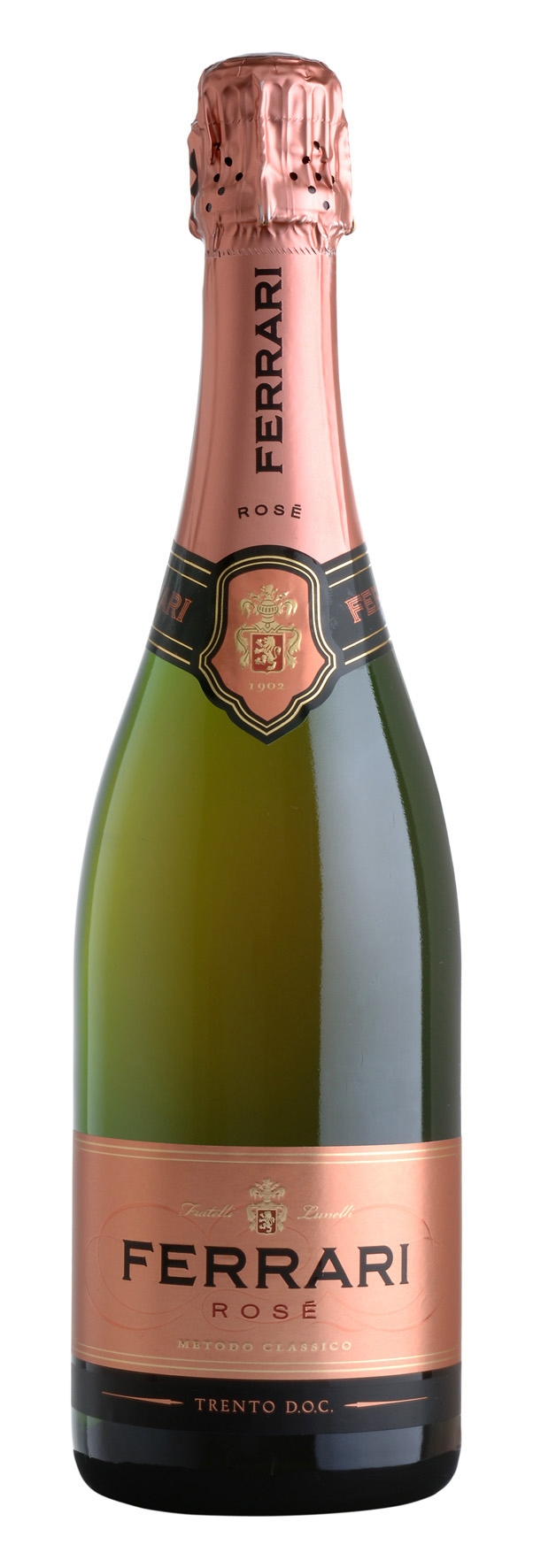


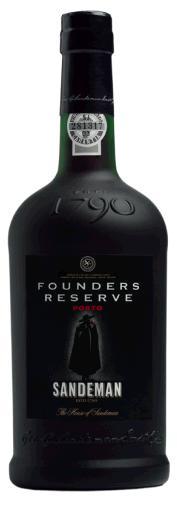 A couple of years ago I was in Portugal and it’s fair to say I encountered a great surprise. There was no question that there would be excellent Port to sample in both Oporto and the Douro. What I didn’t expect was the flexibility of some Ports as a blending component in cocktails. Towards that end I took place in a class with a Mixologist and was pleasantly surprised with the results. I tend to think of Port more in the winter months and with the weather getting nippy it’s high time to drink more Port. With that in mind I tried my hand making a couple of drinks using Sandeman Founders Reserve Port.
The first drink is from Sandemans own recipe.
A couple of years ago I was in Portugal and it’s fair to say I encountered a great surprise. There was no question that there would be excellent Port to sample in both Oporto and the Douro. What I didn’t expect was the flexibility of some Ports as a blending component in cocktails. Towards that end I took place in a class with a Mixologist and was pleasantly surprised with the results. I tend to think of Port more in the winter months and with the weather getting nippy it’s high time to drink more Port. With that in mind I tried my hand making a couple of drinks using Sandeman Founders Reserve Port.
The first drink is from Sandemans own recipe.
 Last week I was lucky enough to sit and taste wine over dinner with Bernard Portet at
Last week I was lucky enough to sit and taste wine over dinner with Bernard Portet at 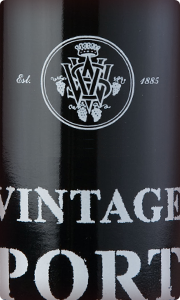 V. Sattui Winery
V. Sattui Winery
 When I was in Chile last month I participated in a virtual Blogger tasting. I’d taken part in previous tastings of that kind from home before. But on this occasion I was onsite in an adjacent room while the winemakers discussed their varied offerings a few feet away. Getting to mingle with a roomful of winemakers before and after the tasting was one of many highlights that dotted a wonderful week in Chile. There were several standouts for me that day; one of them came from producer
When I was in Chile last month I participated in a virtual Blogger tasting. I’d taken part in previous tastings of that kind from home before. But on this occasion I was onsite in an adjacent room while the winemakers discussed their varied offerings a few feet away. Getting to mingle with a roomful of winemakers before and after the tasting was one of many highlights that dotted a wonderful week in Chile. There were several standouts for me that day; one of them came from producer  The Ventisquero 2010 Grey Carmenère was produced from fruit sourced at Trinidad Vineyard in Chile’s Maipo Valley. This is a 100% varietal offering. Fermentation took place in stainless steel tanks followed by aging in French oak over 18 months. 33% of the barrels utilized were new. An additional 8 months of bottle aging occurred prior to release. This wine has a suggested retail price of $23.99. Boysenberry, vanilla and violet aromas burst out from the nose of this Carmenère. The palate is juicy and pleasing with plums, blackberry and berry fruit flavors galore. Green herb notes underscore things here and play a supporting role. Black tea, plum pudding spices, minerals and black pepper all emerge on the finish. There is a lovely balance in this wine with loads of eager fruit buoyed by lots of spice and a lovely collection of herbaceous characteristics. The Ventisquero Carmenère works equally well paired with full flavored foods as it does on its own.
The Ventisquero 2010 Grey Carmenère was produced from fruit sourced at Trinidad Vineyard in Chile’s Maipo Valley. This is a 100% varietal offering. Fermentation took place in stainless steel tanks followed by aging in French oak over 18 months. 33% of the barrels utilized were new. An additional 8 months of bottle aging occurred prior to release. This wine has a suggested retail price of $23.99. Boysenberry, vanilla and violet aromas burst out from the nose of this Carmenère. The palate is juicy and pleasing with plums, blackberry and berry fruit flavors galore. Green herb notes underscore things here and play a supporting role. Black tea, plum pudding spices, minerals and black pepper all emerge on the finish. There is a lovely balance in this wine with loads of eager fruit buoyed by lots of spice and a lovely collection of herbaceous characteristics. The Ventisquero Carmenère works equally well paired with full flavored foods as it does on its own. The Rodney Strong Vineyards 2011 Charlotte’s Home Sauvignon Blanc was produced from fruit sourced in Alexander Valley and Russian River Valley. 90% was fermented in temperature controlled stainless steel at low temperatures; the balance in French oak. This widely available wine has a suggested retail price of $15 but can most often be found selling for closer to $11. Lemon ice, white pepper and mineral aromas fill the excitable nose of this 2011 Sauvignon Blanc. Citrus characteristics dominate the palate along with bits of orchard fruit and a gentle hint of pineapple as well. The finish is clean and crisp with mineral and spice notes reverberating well after the last sip has been swallowed. Year after year this wine delivers awesome flavor for a very small price. This is a terrific Sauvignon Blanc for the money and one you can bank on one vintage after another.
The Rodney Strong Vineyards 2011 Charlotte’s Home Sauvignon Blanc was produced from fruit sourced in Alexander Valley and Russian River Valley. 90% was fermented in temperature controlled stainless steel at low temperatures; the balance in French oak. This widely available wine has a suggested retail price of $15 but can most often be found selling for closer to $11. Lemon ice, white pepper and mineral aromas fill the excitable nose of this 2011 Sauvignon Blanc. Citrus characteristics dominate the palate along with bits of orchard fruit and a gentle hint of pineapple as well. The finish is clean and crisp with mineral and spice notes reverberating well after the last sip has been swallowed. Year after year this wine delivers awesome flavor for a very small price. This is a terrific Sauvignon Blanc for the money and one you can bank on one vintage after another.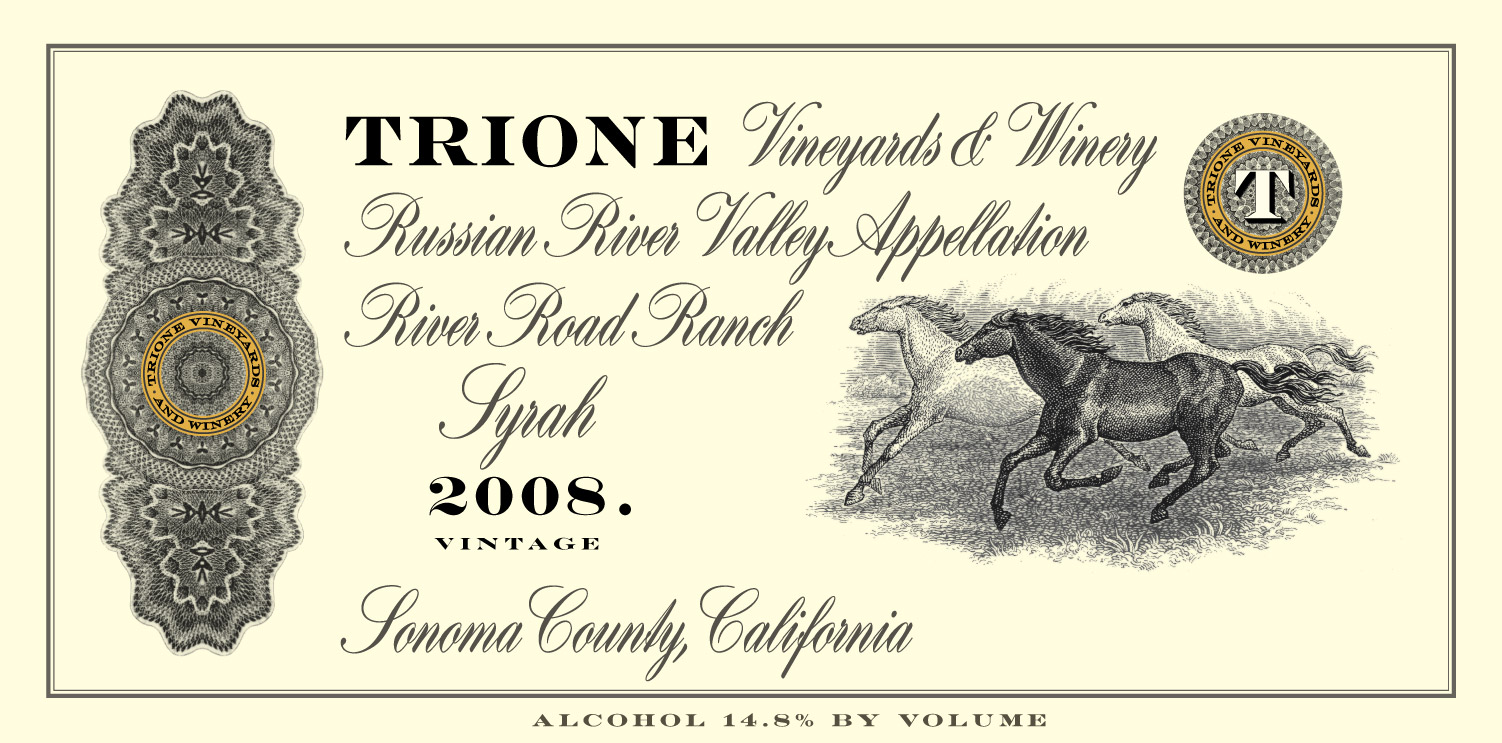 For more than 30 years the Trione Family has been growing and selling grapes in Sonoma County from their own property as well as vineyards they manage. In 2005 they launched
For more than 30 years the Trione Family has been growing and selling grapes in Sonoma County from their own property as well as vineyards they manage. In 2005 they launched  Terroir is one of those ideas that is thrown around a lot as a buzz word in the wine industry. Depending on who it is bringing it up there can be a bit of controversy surrounding it. And while it may seem a little out there to some folks to think that Cabernet Sauvignon for example planted in a specific spot can be imbued with very different characteristics than a Cabernet Sauvignon planted a few hundred feet away, the truth is in the bottle. All one really needs to better understand the concept of Terroir is a taste, once you’ve experienced it first hand it’s easier to believe. Of course it’s a sliding scale and not every wine or more specifically every place will impart that. Furthermore some wines are made in such a style that their Terroir ends up being masked. That’s a different part of the subject for another day. This is about wines that do show their sense of place. I attended Vinos De Terroir hosted by Wines of Chile. The concept was a focused look at 10 great examples of Terroir driven wines from Chile. The event took place at
Terroir is one of those ideas that is thrown around a lot as a buzz word in the wine industry. Depending on who it is bringing it up there can be a bit of controversy surrounding it. And while it may seem a little out there to some folks to think that Cabernet Sauvignon for example planted in a specific spot can be imbued with very different characteristics than a Cabernet Sauvignon planted a few hundred feet away, the truth is in the bottle. All one really needs to better understand the concept of Terroir is a taste, once you’ve experienced it first hand it’s easier to believe. Of course it’s a sliding scale and not every wine or more specifically every place will impart that. Furthermore some wines are made in such a style that their Terroir ends up being masked. That’s a different part of the subject for another day. This is about wines that do show their sense of place. I attended Vinos De Terroir hosted by Wines of Chile. The concept was a focused look at 10 great examples of Terroir driven wines from Chile. The event took place at 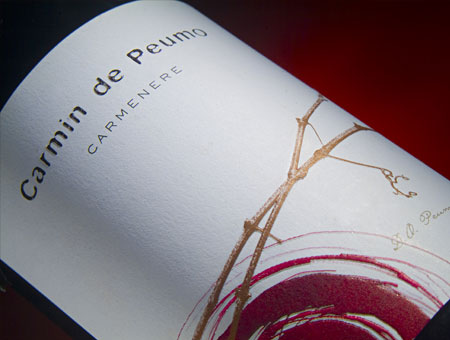

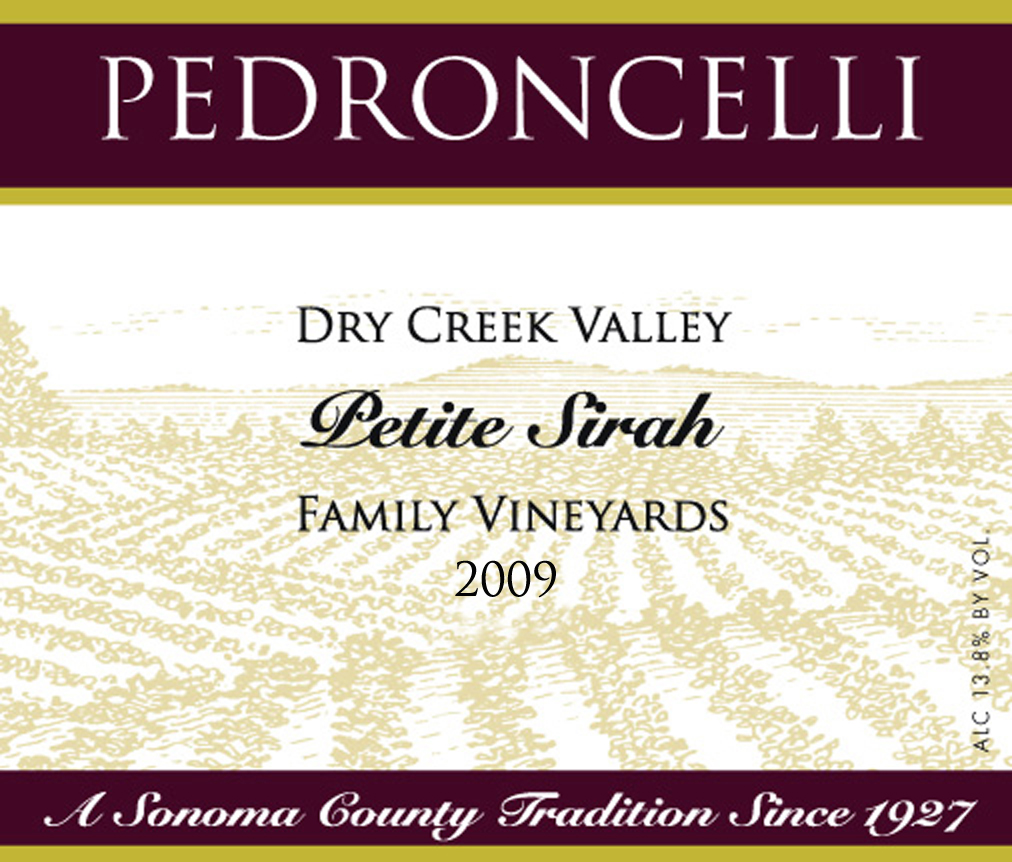 If there’s a better Petite Sirah for under $20 than the one
If there’s a better Petite Sirah for under $20 than the one 
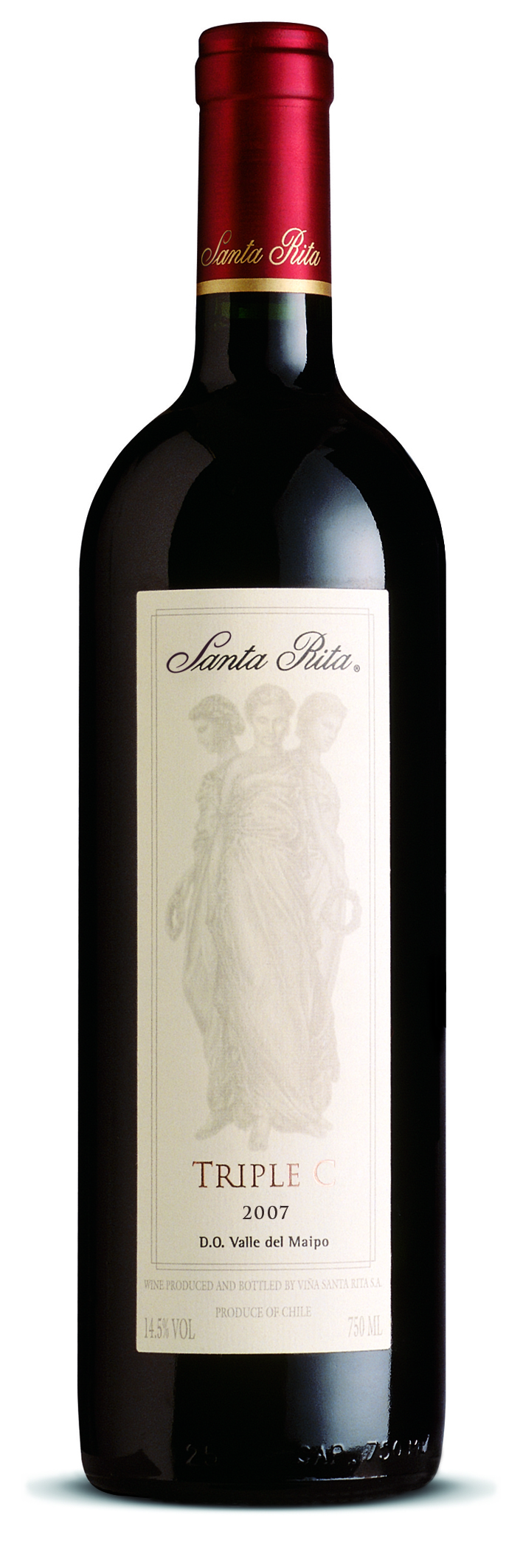 Santa Rita 2009 Medalla Real Cabernet Sauvignon D.O. Maipo Valley: This wine is predominately Cabernet Sauvignon (95%) with a touch of Cabernet Franc (5%) blended in. The vines utilized have 15 years of age on them. Barrel aging occurred over 14 months in a combination of 1st, 2nd and 3rd use oak. The Medalla Real range of wines has a suggested retail price of $19.99. This wine has a classic Cabernet Sauvignon nose of red and black berries laced with hints of toast and wisps of vanilla bean. Boatloads of cherry flavors dominate the palate and lead to pomegranate characteristics on the finish along with earth and black pepper. This is a remarkable Cabernet Sauvignon for under $20. A Cabernet of this quality, depth and persistence from Napa Valley to use one point of comparison would easily fetch $35-$40.
Santa Rita 2009 Medalla Real Cabernet Sauvignon D.O. Maipo Valley: This wine is predominately Cabernet Sauvignon (95%) with a touch of Cabernet Franc (5%) blended in. The vines utilized have 15 years of age on them. Barrel aging occurred over 14 months in a combination of 1st, 2nd and 3rd use oak. The Medalla Real range of wines has a suggested retail price of $19.99. This wine has a classic Cabernet Sauvignon nose of red and black berries laced with hints of toast and wisps of vanilla bean. Boatloads of cherry flavors dominate the palate and lead to pomegranate characteristics on the finish along with earth and black pepper. This is a remarkable Cabernet Sauvignon for under $20. A Cabernet of this quality, depth and persistence from Napa Valley to use one point of comparison would easily fetch $35-$40.

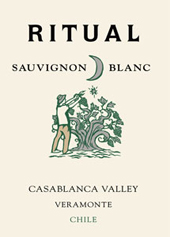 Veramonte – 2011 Ritual Sauvignon Blanc – This wine is richer and riper than the entry level Sauvignon Blanc. The palate has a bit more heft than the average Chilean Sauvignon Blanc. It’s a spicy and round wine with a mineral laden finish. Most of the fruit was sourced from two high performing blocks. Their goal of proactive farming as opposed to winery manipulation shines through in this release.
Veramonte – 2011 Ritual Sauvignon Blanc – This wine is richer and riper than the entry level Sauvignon Blanc. The palate has a bit more heft than the average Chilean Sauvignon Blanc. It’s a spicy and round wine with a mineral laden finish. Most of the fruit was sourced from two high performing blocks. Their goal of proactive farming as opposed to winery manipulation shines through in this release.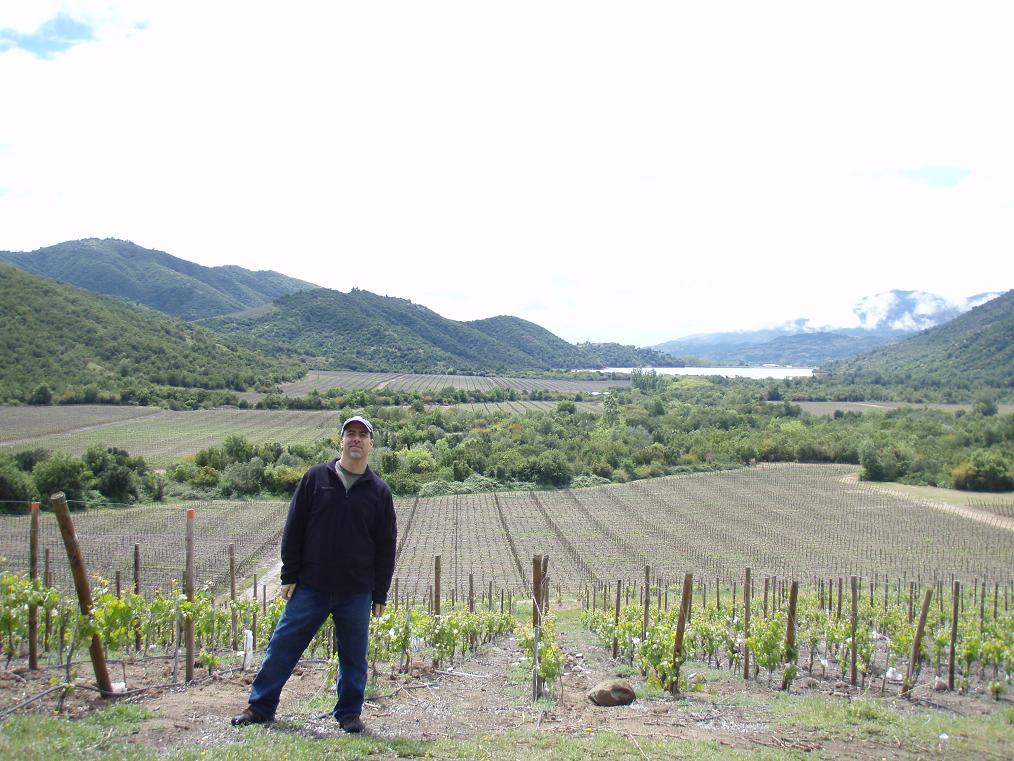
 The Viña Vik 2010 is a blend of Cabernet Sauvignon (56%), Carménère (32%), Cabernet Franc (5%), Merlot (4%) and Syrah (3%). It was fermented with native yeasts and spent 23 months in barrel prior to bottling this past April. This wine has a spectacular nose loaded with Cherry and leather characteristics. The palate is layered with depth and complexity to spare. Cherry and hints of black fruits star. This is a juicy and mouth-filling wine with an impressively lengthy finish. It’s a young wine that will benefit from proper cellaring and should have at least 10 years of enjoyable drinking ahead of it. We tasted it several times both by itself in a formal setting and paired with lunch where it had been decanted. When it had the opportunity to showcase itself alongside food it really impressed.
The Viña Vik 2010 is a blend of Cabernet Sauvignon (56%), Carménère (32%), Cabernet Franc (5%), Merlot (4%) and Syrah (3%). It was fermented with native yeasts and spent 23 months in barrel prior to bottling this past April. This wine has a spectacular nose loaded with Cherry and leather characteristics. The palate is layered with depth and complexity to spare. Cherry and hints of black fruits star. This is a juicy and mouth-filling wine with an impressively lengthy finish. It’s a young wine that will benefit from proper cellaring and should have at least 10 years of enjoyable drinking ahead of it. We tasted it several times both by itself in a formal setting and paired with lunch where it had been decanted. When it had the opportunity to showcase itself alongside food it really impressed. We proceeded to walk a few blocks to
We proceeded to walk a few blocks to 
 Tenuta di Vignole is owned by the Nistri Family who has been involved locally in the wine business since the mid 1800’s. They acquired their 21 hectares of winery property in 1970. Their focus of course is on making Chianti. I recently had a chance to taste some of their wines alongside family member Fabrizio Nistri. They were, on the whole, delicious well made wines but one stood above the others for me and I’ll look at it today.
The Tenuta di Vignole – 2006 Vignole Chianti Classico Riserva is produced from fruit sourced in the Panzano section of Chianti Classico. This offering is a blend of predominately Sangiovese (85%), with some Cabernet Sauvignon (15%) utilized as well. The fruit was handpicked and individual lots were fermented in concrete vats. Barrel aging took place over 20 months in a combination of 225 liter barriques and larger 400 liter vessels. After that time the lots were assembled and another 3 months of barrels aging commenced followed by 6 or more months of bottle aging. 1,200 6 pack cases of this wine were produced and it has a suggested retail price of $59.99.
Tenuta di Vignole is owned by the Nistri Family who has been involved locally in the wine business since the mid 1800’s. They acquired their 21 hectares of winery property in 1970. Their focus of course is on making Chianti. I recently had a chance to taste some of their wines alongside family member Fabrizio Nistri. They were, on the whole, delicious well made wines but one stood above the others for me and I’ll look at it today.
The Tenuta di Vignole – 2006 Vignole Chianti Classico Riserva is produced from fruit sourced in the Panzano section of Chianti Classico. This offering is a blend of predominately Sangiovese (85%), with some Cabernet Sauvignon (15%) utilized as well. The fruit was handpicked and individual lots were fermented in concrete vats. Barrel aging took place over 20 months in a combination of 225 liter barriques and larger 400 liter vessels. After that time the lots were assembled and another 3 months of barrels aging commenced followed by 6 or more months of bottle aging. 1,200 6 pack cases of this wine were produced and it has a suggested retail price of $59.99.